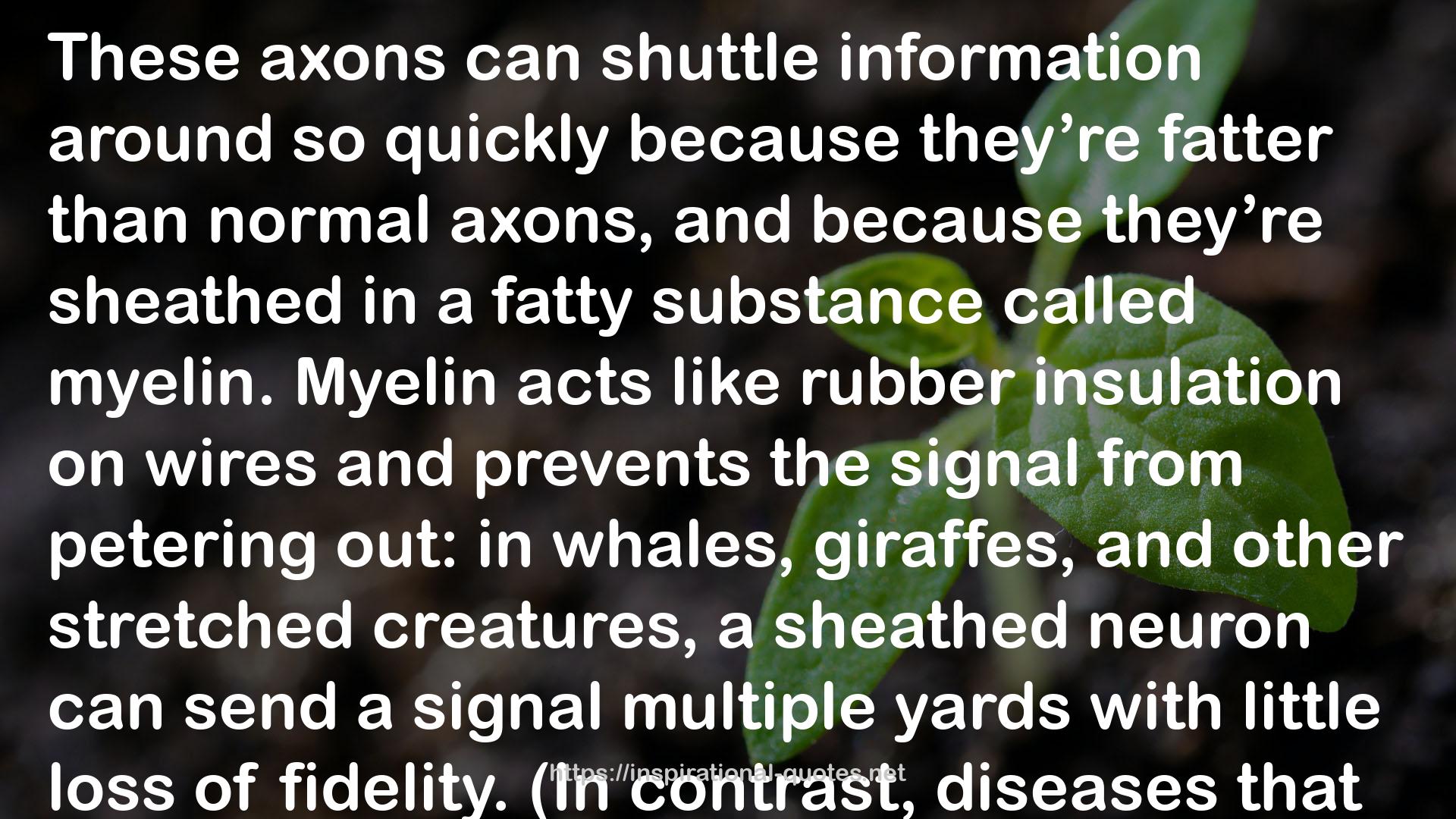" These axons can shuttle information around so quickly because they’re fatter than normal axons, and because they’re sheathed in a fatty substance called myelin. Myelin acts like rubber insulation on wires and prevents the signal from petering out: in whales, giraffes, and other stretched creatures, a sheathed neuron can send a signal multiple yards with little loss of fidelity. (In contrast, diseases that fray myelin, like multiple sclerosis, destroy communication between different nodes in the brain.) In sum, you can think about the gray matter as a patchwork of chips that analyze different types of information, and about the white matter as cables that transmit information between those chips. (And before we go further, I should point out that “gray” and “white” are misnomers. Gray matter looks pinkish-tan inside a living skull, while white matter, which makes up the bulk of the brain, looks pale pink. The white and gray colors appear only after you soak the brain in preservatives. Preservatives also harden the brain, which is normally tapioca-soft. This explains why the brain you might have dissected in biology class way back when didn’t disintegrate between your fingers.) "
― Sam Kean , The Tale of the Dueling Neurosurgeons: The History of the Human Brain as Revealed by True Stories of Trauma, Madness, and Recovery
